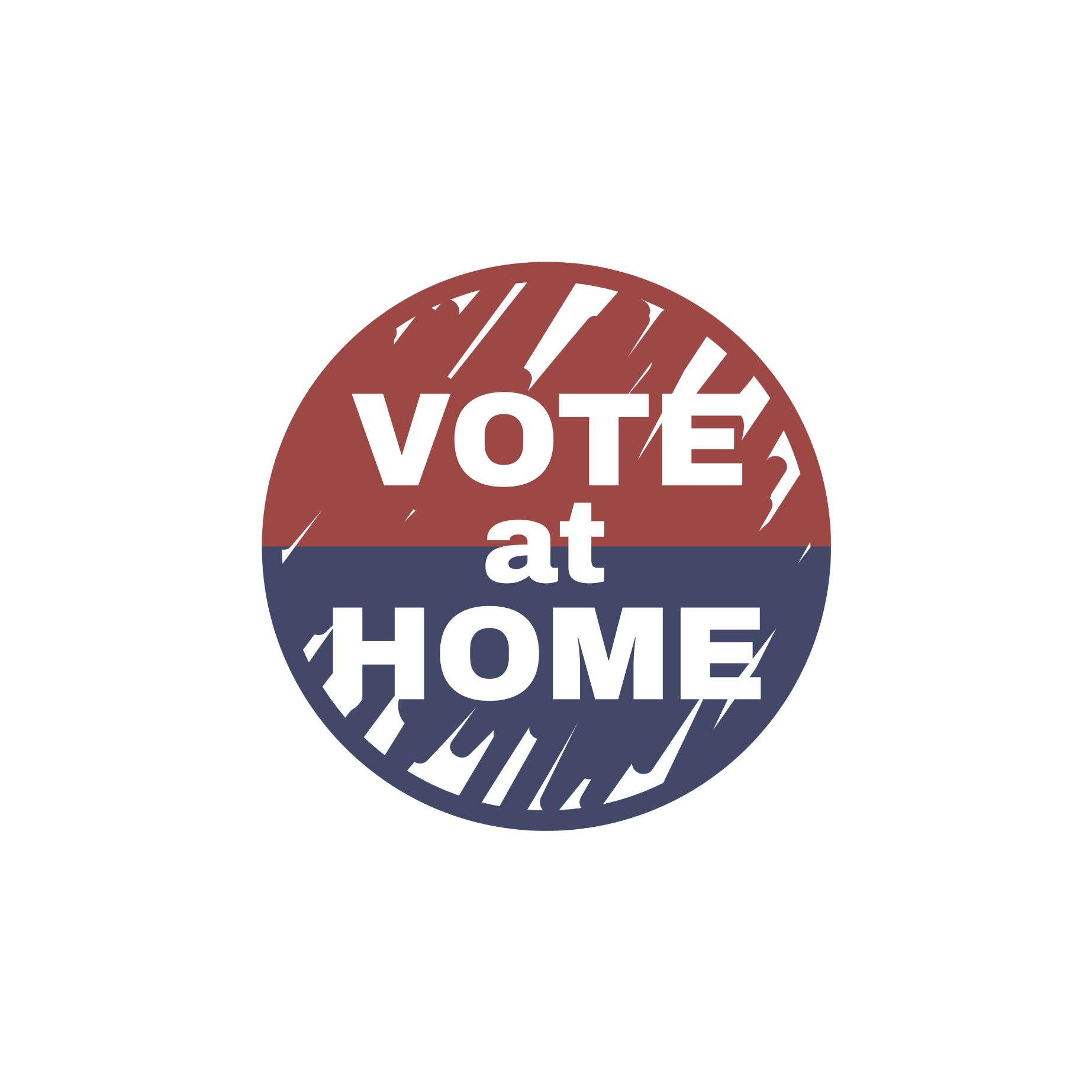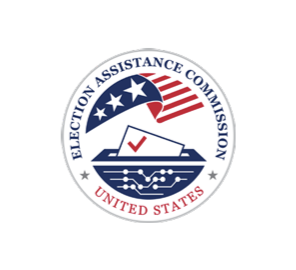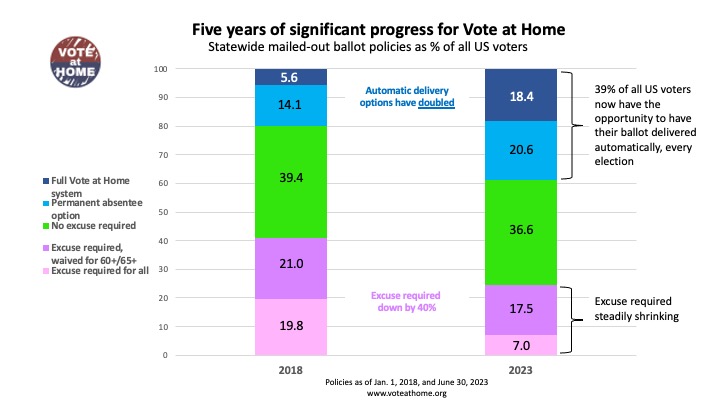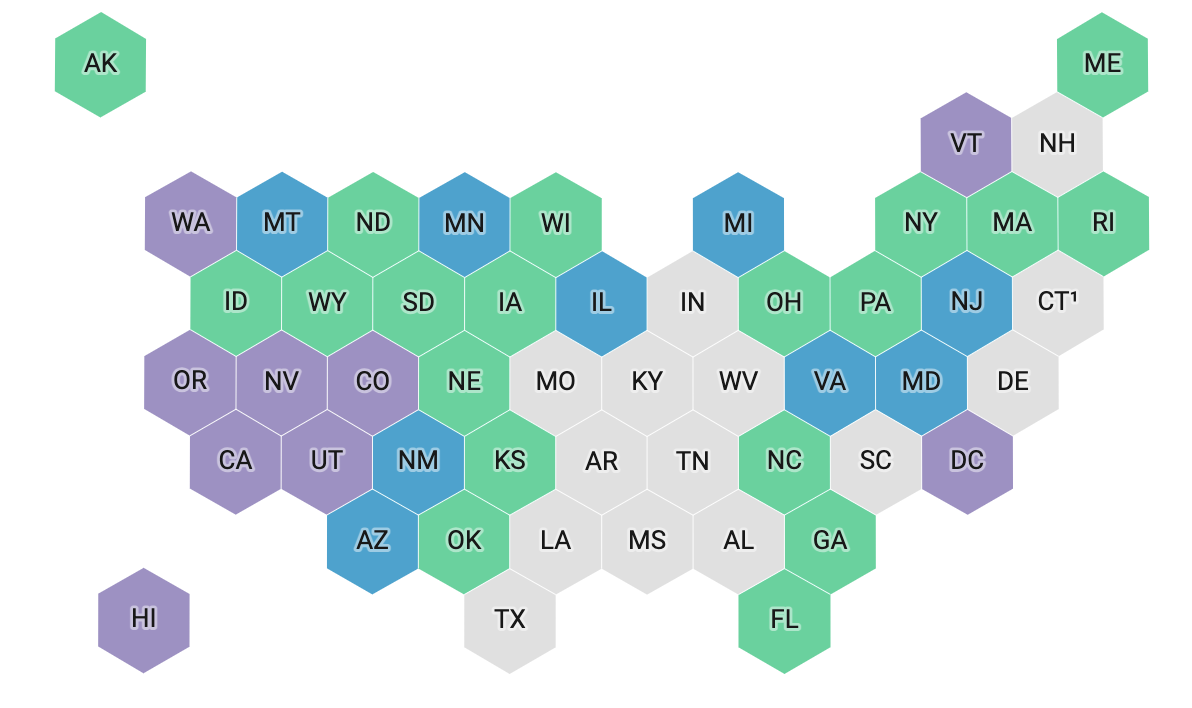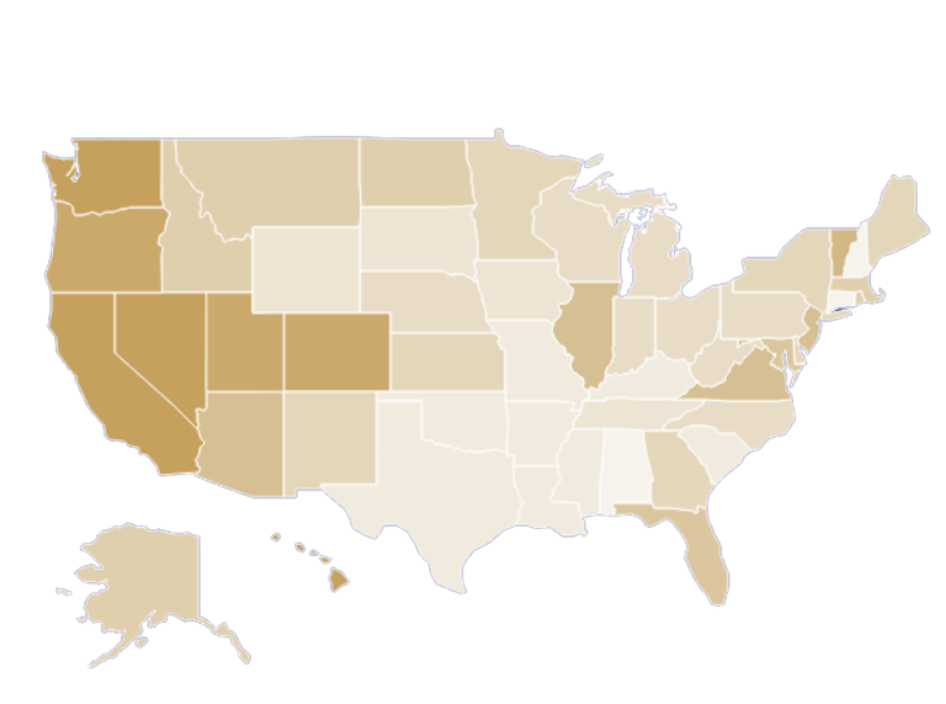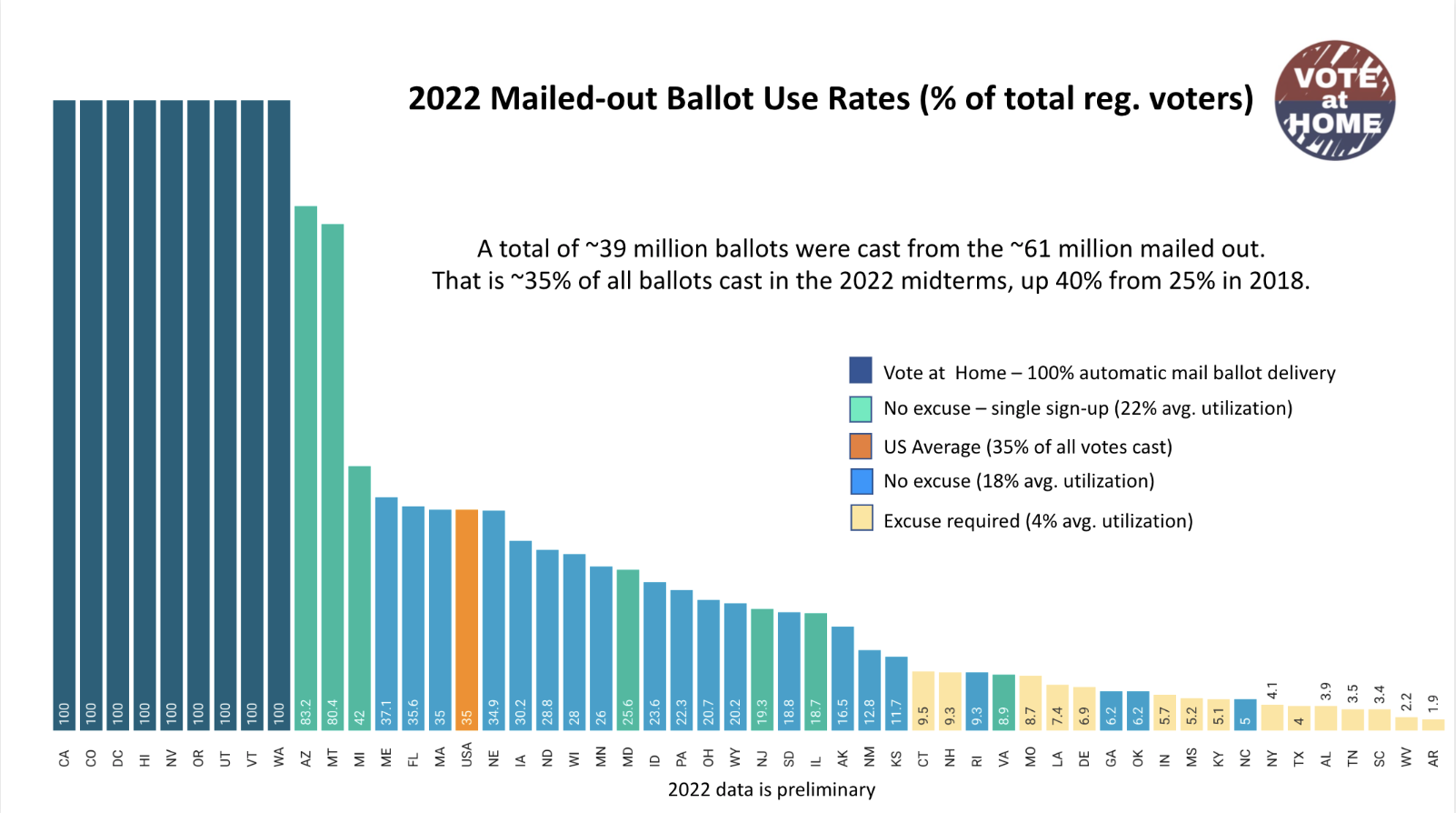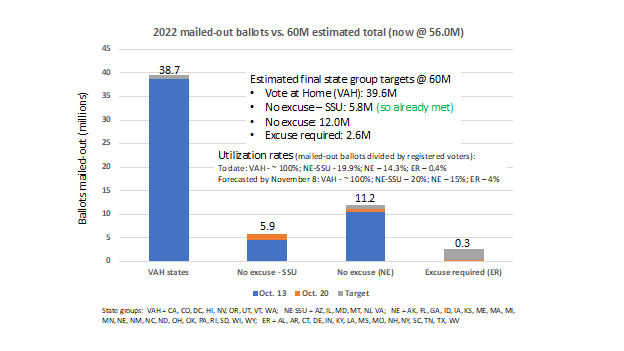(March 15, 2023) — The National Vote at Home Institute (NVAHI) today issued their first-ever national scorecard highlighting how “Vote at Home friendly” all 50 states and the District of Columbia are in providing citizens access to, use of, and confidence in mailed-out paper ballots.
Based on 15 criteria that highlight three main principles (access, trust, and security), the scorecard is designed to focus on policy and budget decisions made by state legislatures, and to avoid implicit judgements that can’t be quantified. It scores the most significant steps and potential obstacles in facilitating a mail ballot’s journey from election officials to voters and back again.
States score well for adopting inclusive policies that increase access to and use of mailed-out ballots. For example, “local option” laws that allow the Vote at Home model in specific circumstances; or “permanent absentee,” allowing voters to choose to automatically receive their mailed-out ballot for at least four years of future elections. Other indicators include the availability of ballot tracking technology to notify voters when their ballots are dispatched, received, and counted; and “notify and cure” policies that give voters time to correct mistakes or update their signatures. Scores are based on state policies and practices as of March 15, 2023.
“This is the most focused and comprehensive scorecard of its kind, with criteria that provide a clear guide to boosting mail ballot use,” says Barbara Smith Warner, NVAHI Executive Director.
“The National Vote at Home Institute’s mission is to increase voter participation and election security through policies and processes that make it easier for voters to receive, track, and return mail ballots,” says Phil Keisling, NVAHI chair and former Oregon Secretary of State. “Our vision is for all active registered voters in America to automatically receive their paper ballots through the United States Postal Service, several weeks before each election, and then have access to multiple in-person options to ensure voters cast their ballots securely, and have their voices heard.”
Today, eight states — California, Colorado, Hawaii, Nevada, Oregon, Utah, Vermont, and Washington — and Washington, D.C. employ such “Vote at Home” election systems, and all rank high on the scorecard. Still, none received a perfect score of 65. In contrast, all of the ten lowest-scoring states have “excuse required” laws that mandate voters to provide a narrowly defined specific reason to vote by mail. “The rankings reflect which states are closest to the best-designed Vote at Home election systems, and which still have a long way to travel.” Smith Warner says.
The vote at home approach has proven increasingly popular with American voters by streamlining the ballot delivery process, so voters aren’t required to travel to specific locations to receive and cast their ballots. In the 2022 midterm election, a record-setting 35% of Americans voted using this method, with Oregon, the first state to mail all voters their ballot 25 years ago, having the nation’s highest turnout of eligible citizens (62.4% compared to 46.6% nationwide).
Over the last 20 years, NVAHI estimates over 1 billion ballots have been mailed out nationwide for presidential and midterm elections, party primary races, special vacancies, and local elections. Incidences of intentional or consequential fraud with mailed-out ballots have been virtually non-existent, while voter turnout has increased.
A recent study reveals that of the top ten states for turnout of 18-34 year old eligible voters in 2020, six sent mail ballots to all voters. Additionally, a peer-reviewed academic study found that states who implemented this approach in 2020 saw an average of 5.6% gain in turnout among registered voters, with no substantial partisan impact.
“The evidence is clear and compelling that when all eligible registered voters are mailed their ballot, it strengthens our democracy by increasing participation across all demographics,” Smith Warner noted.
NVAHI intends for its scorecard to provide a roadmap for state legislators, election officials, and citizens interested in moving their states closer to adopting full vote at home election systems. The criteria were selected and weighted to help policymakers identify and implement best practices for voting by mail, regardless of size, population or geography of each state.

